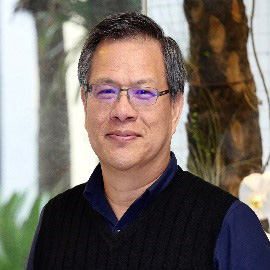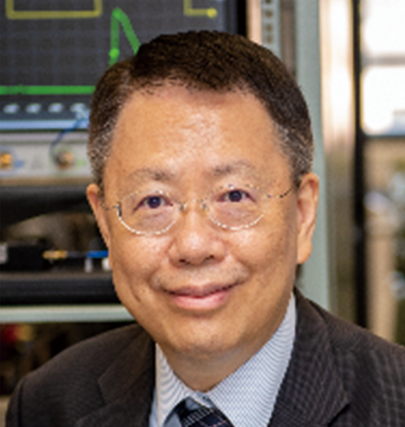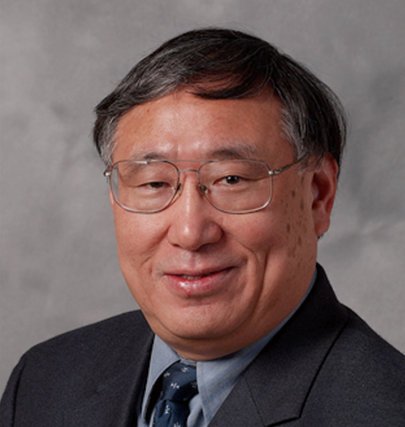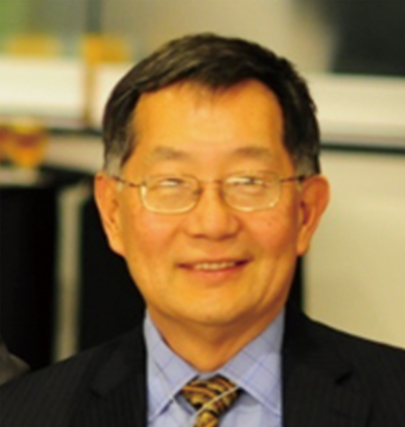
Carmen S. Menoni
2020-2021 IEEE Photonics Society President
Fields of Specialization:
soft-ray microscope,
Title: The multiple facets of nanoscale imaging using bright table-top extreme ultraviolet laser illumination
Carmen S. Menoni is University Distinguished Professor at Colorado State University. She received her PhD in Physics from Colorado State University in 1987. Since 1991, she has been a member of the faculty in the Department of Electrical & Computer Engineering. Prof. Menoni also holds courtesy appointments in the Department of Chemistry and the School of Biomedical Engineering at CSU. Prof. Menoni’s research is in the areas of Extreme Photonics and Nano-photonics. She is also actively involved in using bright coherent beams of light of wavelengths between 10-50 nm for optics applications such as imaging and spectrometry imaging. Prof. Menoni has an active group engaged in the growth and characterization of oxide materials that are the backbone of interference coatings for infrared high power lasers. Her work is published in over 200 archival publications and has been presented in over 300 conference presentations. Prof. Menoni and her team received in 2008 a “R&D 100 Award” for the invention of a table-top 46.9 nm wavelength microscope that can capture images in a single 1 nanosecond with wavelength spatial resolution. Prof. Menoni is Fellow of the Institute of Electrical & Electronic Engineers (IEEE), the American Physical Society, the Optical Society of America and of SPIE.
Abstract :
With wavelengths down to ∼6 nm, and tens of micro-Joule energy pulses, extreme ultraviolet lasers make possible single shot spatial and chemical imaging at the nanoscale. The recent advances in the imaging of nanostructures, and on three dimensional composition imaging are described.

Ann-Shyn Chiang
Academician, Academia Sinica
Dean, College of Life, National Tsing Hua University, Taiwan
Fields of Specialization:
Title: Imaging Brain Connectomes
Ann-Shyn Chiang Received Ph.D. (1990) and trained as a postdoctoral fellow (1992) in Rutgers University, Ann-Shyn Chiang joined Department of Life Science, National Tsing Hua University as an associate professor (1992), promoted as professor (1997), took sabbatical to study Drosophila memory at Cold Spring Harbor Laboratory (2001) and became the adjunct International Faculty of Kavli Institute for Brain and Mind (KIBM) at the University of California, San Diego (since 2011). For his contribution to our understanding of memory formation using a connectomics approach, Chiang was elected as an Academician of Academia Sinica (2014) and a fellow of The World Academy of Science (2016).
Chiang invented the world-first hydrophilic tissue clearing technology, reconstructed a brain-wide wiring diagram in Drosophila (the New York Times reported this discovery as the first step toward mapping human brain) and published the first Cell (2007) paper from Taiwanese scientists. Guiding by this connectomics map, he and his colleagues discovered that long-term memory formation requires new protein synthesis only in few brain neurons and published the first full article in Science (2012) from Taiwanese scientists. At his Presidential Special Lecture in the Society for Neuroscience 2016 Annual Meeting, Chiang announced the era toward whole-body connectomics. He received many awards, including: Outstanding Research Award, National Science Council (2004, 2009, 2012); Outstanding Scholar Award, Foundation for the Advancement of Outstanding Scholarship (2007); Academic Award of Ministry of Education (2007); Outstanding Contributions in Science and Technology of Executive Yuan (2008); TWAS Prize in Biology (2012); and National Chair Award of Ministry of Education (2015).
Chiang is currently the Distinguished Chair Professor and the Director of Brain Research Center of National Tsing Hua University, and the International Fellow of Kavli Institute for Brain and Mind at the University of California, San Diego.
Abstract :
Understanding information flows and their changes in the brain requires a comprehensive map of neural structures at all levels, similar to those of Google Earth for continents, countries, cities, and streets. By integrating multiscale imaging technologies, I propose a practical approach aiming for mapping individual neurons, cellular organelles, synapses and single molecules in the entire Drosophila brain. I will discuss opportunities and challenges toward mapping the human connectome at single synapse resolution.

Din Ping Tsai
Chair Professor, Hong Kong Polytechnic University, Hong Kong Emeritus Professor, National Taiwan University, Taiwan
Fields of Specialization:
Interactions of light and matter at the nanometer scale, Near-field optics, Nano photonics of plasmonic metamatrials
Title: Meta-lens: An eye to the future
Professor Din-Ping Tsai is currently Emeritus Professor of the Department of Physics, National Taiwan University. He is an elected Member of International Academy of Engineering (IAE), and Academician of Asia-Pacific Academy of Materials (APAM). He is an elected Fellow of American Association for the Advancement of Science (AAAS), American Physical Society (APS), Electro Magnetics Academy (EMA), Institute of Electrical and Electronics Engineers (IEEE), The Japan Society of Applied Physics (JSAP), Optical Society of America (OSA), and International Society of Optical Engineering (SPIE), respectively. He is author and coauthor of 316 SCI papers (more than 12,589 SCI cited times, SCI H-index 55), 65 book chapters and conference papers, and 38 technical reports and articles. He was granted 67 patents in USA (19), Japan (3), Canada (3), Germany (2), etc. for 44 innovations. He was invited as an invited speaker for international conference or symposium more than 275 times (12 Plenary Talks, 48 Keynote Talks). He received many prestigious recognitions and awards including “2019 Global Highly Cited Researchers,” Web of Science Group (Clarivate Analytics); China’s Top 10 Optical Breakthroughs in 2018,” Chinese Laser Press (2019); “Mozi Award” from International Society of Optical Engineering (SPIE) (2018); “Futuretech Breakthrough Award,” MOST, Taiwan (2018, 2017); etc. He currently serves as an Editor of Progress in Quantum Electronics (Elsevier), and Associate Editor of Journal of Lightwave Technology (IEEE & OSA).
Abstract :
Optical meta-devices using meta-surfaces which are composed of artificial nanostructures can manipulate the electromagnetic phase and amplitude at will. The design, fabrication and application of the novel optical meta-devices are reported in this talk. As an eye to the future, meta-lens is considered as the top 10 emerging technologies in World Economic Forum 2019. Design principles and application prospects of meta-lens will be addressed in this talk.

Frank Ko
President & Chief Operating Officer, AU Optronics Corporation
Fields of Specialization:
Title: Accelerating Digital Transformation and Display Innovation in the New Normal
Dr. Frank Ko is currently AUO’s president and chief operating officer. He has extensive experience in the display industry and is highly familiar with domains as diverse as manufacturing, R&D, marketing, sales, and strategy. Ko joined AUO in 2000. After several years of work in research and development, LCD manufacturing and integration, and TV display marketing functions, he became head of the TV Display Business Unit in 2005. He was promoted to associate vice president in 2007 and vice president of the TV Display Business Group in 2010. During this period, he successfully developed customers from major global TV brands, significantly expanded the mainland China market, and led AUO to become a primary supplier of LCD TV panels. In 2011, he served as vice president of the technology and strategic development office, and led the development of the company's technology roadmap and strategic direction. In 2014, he served as chairman and CEO of E Ink Holdings, Inc. Ko received his Ph.D. in photonics from National Chiao Tung University.
Abstract :
The COVID-19 pandemic has not only threatened people’s lives but also changed people’s daily life. Prevention measures such as lockdown and school closure have initiated a new home-centered life style, zero contact economy and increased need for medical resources in public life. This change of lifestyle is accelerating digital transformation through the combination of 5G, AI and display innovations. In the post-pandemic era, innovative display technology serves as a key interface for interpersonal and human-computer communications, keeping people connected.

Gee-Kung Chang
Byers Eminent Scholar Chair Professor, Georgia Institute of Technology, USA
Fields of Specialization:
Optoelectronics and photonics, Optical networks and systems, Optical label and packet switching technologies, Passive access networks: TDM- and WDM-PONs, Radio-over-fiber and wireless-over-fiber access networks
Title: Embarking for 6G Wireless Networks: A New Dawn of Mobile Data Communications
Professor Chang received his bachelor's degree in physics from National Tsinghua University in Taiwan and his doctoral degree from the University of California, Riverside. Dr. Chang devoted a total of 23 years of service to R&D at Bell Systems-Bell Labs, Bellcore, and Telcordia Technologies-where he served in various management positions including Director of Optical System Integration and Network Interoperability Group, and finally, Director and Chief Scientist of Optical Internet Research. Prior to joining Georgia Tech, he served as Vice President and Chief Technology Strategist of OpNext, Inc., where he was in charge of technology planning and product strategy for high-speed optical networking components and systems.
Professor Chang has been granted 55 patents and co-authored more than 300 peer-reviewed journal and conference papers in the areas of optoelectronic devices, high speed integrated circuits, telecommunication switching components and systems, WDM optical networking systems and networks, optical network security, optical label switching and optical interconnect technologies, TDM- and WDM-PONs, and radio-over-fiber and wireless-over-fiber systems and networks. He has been an active contributor to many IEEE Photonics Society and Optical Society of America (OSA) sponsored journals, conferences, and committees. He has served five times as the lead guest editor for special issues of the Journal of Lightwave Technology (JLT) andJournal of Optical Communications and Networking (JOCN), sponsored by IEEE and/or OSA. The special issues include:Optical Networks published in 2000 by JLT, Metro and Access Networks published in 2004 by JLT, Convergence of Optical Wireless Access Network in 2007 by JLT, Radio-over-Optical Fiber Networks in 2008 by JOCN, and the most recent one on Very High Throughput Wireless over Fiber Technologies and Applications in 2010 by JLT. He is a pioneer and champion of broadband wireless over fiber technologies for convergence of wireless and optical access networks that provides high bandwidth, high capacity, and mobile access to future Internet users.
Abstract :
The existing communication network infrastructure is experiencing tremendous growing pressures to accommodate much increased data throughput, while service providers seek to offer spectral- efficient, extreme high bandwidth, large connectivity, low-latency, ultra-reliable and cost-effective broadband internet access services over denser and wider areas of coverage. We aim to develop frontier technologies of 6G radio networking technologies through exploring novel, all spectrum integration scenarios and artificial intelligence powered applications in optimized fiber-wireless integrated radio access networks. Novel mobile fronthaul concepts are developed to leverage the unique properties availed by the optical domain, (e.g. range, bandwidth efficiency, capacity) to enable dynamic allocation of RF, mm-Wave and lightwave spectra and resources for optimized wireless network performance.
While 5G is beginning its global roll-out, major R&D centers have set eyes on mapping out research challenges of 6G wireless communication networks, assisted by early experience of 5G industrial and regular commercial users, for essential business drivers and social networking applications. We will discuss several key enabling technologies in a new dawn of mobile data communications: 1) Artificial Intelligence (AI) enhanced mobile-edge computing; 2) Intelligent radio network scheduling with physical and media access control and channel monitoring; 3) AI-enhanced multi-dimensional coordinated beamforming and precision positioning system for multi-user mmWave MIMO systems; 4) Efficient network slicing for service-specific resource allocation and management. 5) Novel 6G waveforms providing power-efficient, low-latency, reliable links at the mobile edge, and 6) Spectrum sensing, interference detection and cancellation techniques.evolution towards 6G mobile data communications.
We will develop the much needed technologies for an all-spectrum, autonomic resilient communication network integrated with adaptive mobile edge computing nodes comprises seamlessly integrated optical fiber, RF, millimeter wave, sub-THz, and free-space lightwave communications. We will not only champion technical innovation and promote business growth mathematical models and theoretical analyses but also develop the foundation of integrated fiber-wireless technologies for new radio access networks.evolution towards 6G mobile data communications.
With the rapidly growing demand for latency-sensitive, data-intensive, and massive smart connectivity wireless applications, new system technologies related to post-5G networks are emerging. By employing fiber-wireless integration and networking radio access infrastructure employed by 5G, all data-carrying channels could be aggregated in the same fiber-wireless infrastructure. This enables a coordinated radio access network (RAN) with function decoupling, in which lower RF, new radio (NR) milli-wave wave, sub-THz and even light-wave through free space optics (FSO) are employed, and different types of services are efficiently delivered depending on their physical properties. Key system technologies such as artificial intelligence (AI), mobile edge computing (MEC), millimeter wave beam forming and tracking, 3-D precision location positioning system, spectrum sensing, interference detection and mitigation are all essential pillars for evolutions from 5G to 6G wireless networks. evolution towards 6G mobile data communications.
We will present our views on how deep learning techniques through AI can be applied to enhance network performance from physical layer, MAC layer, all the way to service and application layer in 6G mobile data communications. It is foreseeable that an all-spectra function decoupled RAN can play as a unified platform serving all wireless applications with balanced considerations of system throughput, channel condition, network coverage, and software/hardware complexity for evolution towards 6G mobile data communications.

Jianping Yao
Editor-in-Chief, IEEE Photonics Technology Letters
Distinguished Professor, University of Ottawa, Canada
Fields of Specialization:
Title: Integrated Microwave Photonics
Jianping Yao is a Distinguished University Professor and University Research Chair in the School of Electrical Engineering and Computer Science, University of Ottawa, Ottawa, Ontario, Canada. He is Editor-in-Chief of IEEE Photonics Technology Letters, an Advisory Editorial Board Member of Optics Communications, and a Steering Committee Member of IEEE/OSA Journal of Lightwave Technology. Dr. Yao is currently the Chair of the IEEE MTT-S Microwave Photonics Technical Committee and an elected member of the Board of Governors of the IEEE Photonics Society. Dr. Yao has published over 600 papers including over 360 in refereed journals and over 260 in conference proceedings. He was an IEEE Distinguished Microwave Lecturer 2013-2015. Dr. Yao received the 2017-2018 Award for Excellence in Research of the University of Ottawa and was the recipient of the 2018 R.A. Fessenden Award from IEEE Canada. Dr. Yao is a Fellow of IEEE (2012), the Optical Society of America (OSA) (2010), the Canadian Academy of Engineering (CAE) (2012), and the Academy of Science of the Royal Society of Canada (RSC) (2018).
Abstract :
Microwave photonic is an area that deals with the use of photonic techniques to generate, process, control, and transmit microwave signals to take advantage of the high frequency, large bandwidth and low loss offered by modern photonics. There are numerous applications of microwave photonics, such as wideband phased array beamforming, fiber-fed wireless communications (radio over fiber), radar, high speed and high-resolution sensing, and high-performance instrumentation. In this talk, recent advances in integrated microwave photonics will be discussed, especially the implementation of integrated microwave photonic sub-systems and systems for microwave signal generation and processing. Challenges in heterogeneous integration of microwave photonics systems will also be discussed.

John Greivenkamp
2020 SPIE President
Professor, Wyant College of Optical Sciences, The University of Arizona
Fields of Specialization:
Interferometry testing of lenses, and systems and devices for same
Title: Interferometry and Ophthalmic Optics
John E. Greivenkamp is a Professor at the Wyant College of Optical Sciences of the University of Arizona where he has taught courses in optical engineering since 1991. After receiving a Ph.D. from the Optical Sciences Center in 1980, he was employed by Eastman Kodak. He is a fellow of SPIE-the International Society for Optics and Photonics and of OSA. He has served as the editor for the SPIE Field Guides Series and is the author of Field Guide to Geometrical Optics. He is the founder and curator of the Museum of Optics at the Wyant College of Optical Sciences. Professor Greivenkamp was honored with the 2017 SPIE Educator Award and he serves as the 2020 SPIE President.
Abstract :
A long-term research program has been in place at the Wyant College of Optical Sciences to apply interferometry to ophthalmic applications. The first developed system is a transmission Mach-Zehnder interferometer that measures the transmitted wavefront of a contact lens while it is submersed in saline in order to determine the refractive power distribution of the lens. Two additional interferometers examine the dynamics of fluid layers on the surface of a contact lens (in vitro) and of the tear film on the surface of the cornea (in vivo). Both of these systems are instantaneous phase shifting Twyman-Green interferometers. The evolution and changes to the fluid surface are measured at video rates with sub-wavelength precision.

Milton Feng
The Holonyak Chair Emeritus Professor of Electrical and Computer Engineering, University of Illinois at Urbana-Champaign, USA
Fields of Specialization:
Transistor laser, Transistor and light-emitting transistor (LET)
Title: Microcavity Laser that Changed the World
Milton Feng (F’92-LF’17) received his PhD EE from the University of Illinois, Urbana-Champaign, in1979. From 1979 to 1983, he was head of the GaAs material and device group at Torrance Research Center, Hughes Aircraft Company for MMICs for X-band phase array radar and demonstrated the first 60-GHz GaAs amplifiers. From 1984 to 1990, he is director of GaAs operation at Ford Microelectronics, Inc., in Colorado Springs, CO, where he managed the advanced GaAs programs and pilot line production in 1 K SRAM and 500 gate arrays, monolithic microwave integrated circuits (MMICs) for security and satellite communications and GaAs integrated Hall sensors for automotive anti-lock apps.
Since 1991, Dr. Feng has been a professor of electrical and computer engineering at the University of Illinois. He demonstrated InP pseudomorphic HBT the world’s fastest speed performance (> 800 GHz). Prof. Feng, along with Prof. N. Holonyak, Jr., demonstrated the first laser operation of a quantum-well transistor laser (TL). In 2006, his transistor laser paper was selected as top 5 papers in the 43 year-history of Applied Physics Letters. Prof. Feng has published over 250 papers, 220 conference talks, and been granted 42 U.S. patents in semiconductor microelectronics and photonics. He is an IEEE and OSA Fellow. Dr. Feng has received Ford Aerospace Outstanding Principal Investigator Award (1997), IEEE field award - David Sarnoff Award (2000), Pan Wen Yuan Outstanding Research Award in Microelectronics, The Optical Society R. W. Wood Prize (2013), and Distinguished ECE Alumni Award University of Illinois (2017).
Abstract :
The invention of alloyed compound semiconductor lasers and LEDs by Holonyak in 1962 open up the new revolution on display, solid state lighting and optical communications. Similar to transistor scaling to 3 nm ultralow power operation for ULSI, semiconductor laser is also experienced cavity scaling of current and size confinement to achieve energy-efficient data transmission toward < 10fJ/bit. The first electrically pumped SEL was demonstrated with metal cavities by Iga (1979); however, the threshold current was too high for laser applications. Distributed Bragg reflector (DBR) for laser cavities proposed by Scifres and Burnham (1975) were then adopted for SEL to reduce the optical cavity loss. Semiconductor AlGaAs/GaAs DBR was developed by Iga and Jewel (1989) for providing current injection into cavity. Yet, it was not use until the important discovery of the native oxide of AlGaAs by Holonyak and Dallesasse (1989) to provide lateral current and optical confinement in semiconductor laser. Subsequently, the first the oxide-confined VCSEL with a sub-milliamps threshold was demonstrated by Deppe (1994). The ultralow power current injected microcavity lasers have been made into a practical use since 2000 for short-range Gigabit energy-efficient optical data links for data centers, high-performance computers and 3D sensing due to the growing demand of faster access to large amounts of information and have revolutionized our daily life.

Satoshi Kawata
Professor of Osaka University, Japan
Vice President, OSA
Fields of Specialization:
Near Field Optics
Title: Fluctuation and Nanophotonics
Satoshi Kawata is a Professor Emeritus of Osaka University, where he was a Distinguished Professor at the Departments of Applied Physics, Frontier Biosciences, and Information Sciences until 2017. He is also the Honorary Scientist (equivalent to Professor Emeritus) at RIKEN, where he led a research group of Nanophotonics as Chief Scientist till 2015. He founded a laser-scanning Raman microscope company, Nanophoton, in 2002, where he has been the chairman and the president. Professor Kawata served as the president of Japan Society of Applied Physics, the president of the Spectroscopical Society of Japan, the Editor of Optics Communications, and Executive Director of Photonics Center at Osaka University, and now 2020 OSA vice-President (2022 OSA President). He invented a number of nano-photonic technologies, including tip-enhanced plasmonic microscopy in 1992, three-dimensional nanofabrication based on two-photon polymerization in 1997, optical CT microscopy in 1988, multichannel Fourier-transform spectroscopy in 1984, and many others. He has published more than 550 papers with h-index of 77 (Web of Science).
Abstract :
In the advanced optical technology including nano-imaging and nano-sensing, the fluctuation in the system may cause a fatal error in measuring an extremely weak signal, or may deteriorate accuracy and resolution. People use extremely low-noise detectors and electronics in the advanced instruments, and machines are installed on vibration-isolated optical tables in dark and clean rooms, with vacuum and cryogenic technologies to remove fluctuation. In this presentation, I will discuss about nanophotonics with fluctuation, where the fluctuation is rather the source of nano-imaging and nano-analysis, but not that of the error and noise. This concept has been applied to laser-scanning confocal Raman-scattering microscopy where a laser-beam spot purposely fluctuates as random walk, based on stochastic process. Beside the concept proposal, I will show some experimental results.

Mr. Boudewijn Sluijk
Senior Director, Strategic Marketing, Asia-Pacific ASML
Fields of Specialization:
Marketing analysis of semiconductor industry
Title: The future of Moore’s law is brighter than ever
- At present: Boudewijn Sluijk is Sr. Director Strategic Marketing Asia Pacific with ASML
- He is a Sr. member of ASML’s strategy team since 2014 with a focus on long term technology developments.
- Boudewijn has worked in various marketing functions at ASML since 1998. He started ASML’s Market Research department in 2003. He had the honor to introduce ASML’s TWINSCAN product line at SPIE 2001
- Boudewijn graduated in Physics from Leiden University
Abstract :
Semiconductor Technologies are key enablers of 5G and AI and play a vital role in delivering a world of on-demand experiences and continuous connectivity. As we enter a new decade and the Information Era, semiconductor devices and their many applications continue to serve as the growth engine for the semiconductor industry. In this plenary session, ASML will feature how we can enable geometrical scaling with improved resolution and Edge Placement Error (EPE) control. EPE is the key lithography metric where ASML uniquely combines classic litho capability, overlay and CD control with computational litho and process control, dubbed “Holistic Lithography”, which is a corner stone of our strategy.